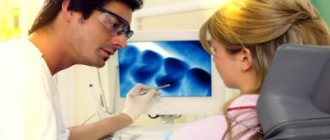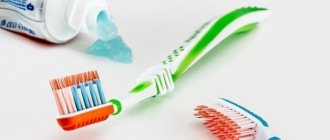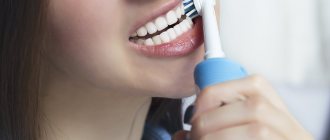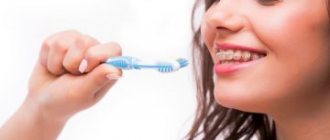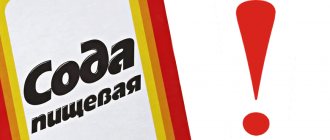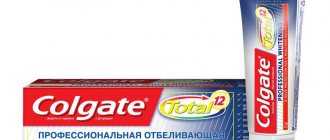Every year, electric toothbrushes are becoming more common, and more people are switching from using mechanical devices to electric, more advanced gadgets. This is explained not only by the fact that such devices cope with their task better and more efficiently, but also by the fact that today they have become quite cheap. Of course, you still need to pay more for an electric brush than for a manual one, but its properties fully pay for themselves. On the modern market, such a device is represented by a lot of brands and an even larger variety of models, which, in turn, are distinguished by a wide range of characteristics and technical differences. The choice can stop at the simplest products at a price of $10, as well as those that cost more than $100 or more.
Of course, given that today toothbrushes have become “smart” and electric, such devices require some care. And so today we want to look at information about how toothbrushes should be cared for and repaired.
Caring for Electric Toothbrushes
To begin with, we suggest considering information about how to care for such important hygienic devices. To ensure that your brush serves you for as long as possible, and the cleaning effect remains at the same quality level, we recommend that you familiarize yourself with the tips described below:
- Carry out systematic rinsing of the brush. Both before and after the cleaning procedure, it is necessary to rinse the brush under running water. This way you can remove various particles of debris from the bristles. You don’t have to worry about the safety of the device, since modern brushes are moisture resistant and are not exposed to water;
- After brushing your teeth, always check the charge level of your toothbrush so that the next time you brush your teeth you won’t get a “pleasant” surprise in the form of a dead battery;
- Always keep the device upright. It is recommended to dry the brush only in a vertical position, placed in an empty, dry glass;
- Change attachments at least once every few months. Just like mechanical toothbrushes, electric ones also require periodic replacement. Fortunately, this does not mean purchasing a new device, but only purchasing a spare brush head. By making such a replacement in a timely manner, you can count on the fact that the effect of brushing your teeth with an electric brush will not decrease, and the attachment itself will not be a breeding ground for germs (after all, when using attachments for more than 3 months, they begin to accumulate a lot of bacteria);
- When changing attachments, it is necessary to perform a cleaning procedure, which involves thorough rinsing under running water. It is not recommended to use heat treatment (such as boiling), as this disrupts the structure of the bristle fibers.
When to change the battery
Like any other battery-powered device, the brush will break down within a few years. There are several signs that indicate that the Oral-B battery needs to be replaced:
- The device works, but is not as active as before.
- The effectiveness of oral care during normal activities decreases.
- A full charge only lasts for one cleaning.
- The device may turn off at any time.
If the Braun Oral-B electric brush is over 2 years old, then all of the above signs indicate a malfunction of the battery.
The device needs to be changed when it completely breaks down, but the nozzles should be changed once every three months. It is also necessary to look at the condition of the head and bristles, since everyone individually cares for the oral cavity. Accordingly, one person can use the attachment for 5 months, and another for 2.
Using a sterilizer
Another important aspect when caring for an electric brush is the use of devices such as a sterilizer (also called disinfectors). This is a small device in the form of a case or cup, which serves to perform a more thorough procedure for sterilizing a toothbrush. Thanks to the use of an ultraviolet sterilizer, you can be completely sure that the brush will be completely sterile and ready for use after each sterilization procedure.
Some toothbrushes are sold with such devices included, but this only applies to more expensive gadgets. If you want to purchase a disinfectant separately, this is a fairly rational solution, but you should be prepared for the fact that such a device can cost the same as a budget electric brush - from 10 to 20 dollars (and some models even higher).
Contraindications
Who should not use an electric toothbrush? It should not be used if:
- weak gums, inflammation;
- acute inflammatory processes in the oral cavity;
- low density, increased abrasion of tooth enamel;
- the presence of wedge-shaped defects or white spots on the enamel;
- presence of dentures, crowns, implants;
- pregnancy and heart disease (in this case, caution must be exercised).
Before using the device, it is advisable to consult a dentist. Can children use an electric toothbrush? It is allowed to be used, but you need to choose an age-appropriate device. According to reviews, it is convenient to use for children and adults.
Even with regular use of the brush, it is necessary to periodically (at least 1-2 times a week) alternate it with the standard one. Dentists advise doing this to reduce the load on the enamel. Such devices significantly simplify the cleaning procedure, save time, and proper use significantly improves the appearance of teeth and increases their lifespan.
How to charge an electric toothbrush
The next very important issue regarding the operation of the electric shield is the correct use of the device’s battery resources and extending its life. Many consumers who systematically use electric gadgets to brush their teeth mistakenly believe that the best solution is to charge the device daily, simply by keeping the brush on charge the entire time the gadget is not in use. Of course, such a hypothesis is doomed to failure, and such actions can only lead to rapid failure of the battery and the need to replace it. In fact, caring for your brush battery should be different, and below we will look at some practical advice from experts.
It is worth noting that some popular manufacturers of electric brushes today assure their consumers that recharging their devices is impossible. That is, if you leave the brush always installed on the charging base, there will be no problems with it, the charge will reach the maximum, and the device will automatically stop charging. However, this is not the most practical solution, so it is not recommended to use it.
Why is the Oral-B electric toothbrush so popular?
Oral-B electric brushes have many advantages:
- They are developed with dentists, so they take into account the medical requirements for hygiene and oral health, as well as the needs of the users.
- Studies have proven that Oral-B electric toothbrushes are more effective at removing tartar and eliminating inflammation compared to regular ones.
- They clean tooth enamel from soft and pigmented plaque, destroy bacterial chains, prevent microbes from multiplying and provide reliable prevention of dental diseases.
- Different modes allow you to brush your teeth with the greatest comfort and efficiency, and comprehensively solve various hygiene problems - cleansing sensitive teeth, whitening, gum massage.
- Most models have pressure sensors that protect your gums from excessive pressure when brushing.
- The latest generation models are equipped with lithium-ion batteries that hold a charge longer and allow you to use the device for up to 14 days without recharging.
- Built-in timers help control the duration of the procedure and signal when it is time to finish cleaning.
- The electric brush is easy to use even for a child (for children it is important to choose special children's models).
How to disassemble an electric toothbrush
Finally, we want to pay attention to the disassembly procedure for toothbrushes from different brands. After all, replacing the battery is not the only operation that brush users may need to perform during their operation. Therefore, it is important to know how to properly disassemble this gadget.
The following instructions must be followed:
- Check the device and make sure it is turned off.
- Remove the nozzle.
- Remove all brush elements that are attached without additional means, such as screws.
- Check the loose parts and unscrew them if possible.
- If we are talking about how to disassemble an electric toothbrush from Braun, Philips or similar brands, then the electrical base with the circuit board and brush controller is installed in the case without using any screws for fastening. Take pliers or tongs, and with their help, securely fixing the rotating element of the brush, pull it towards you. The base of the brush is installed in the body and secured with a rubber ring; with some effort, you can get it out.
- The brush can be considered disassembled.
All other elements of the base can be disassembled as simply as possible and do not require separate instructions. You may need a small shaped screwdriver to remove the screws. After disassembling the brush, you can:
- Replace diodes;
- Replace the battery;
- Replace buttons and other damaged elements;
- Remove and replace the motor.
After performing the necessary operations with the electrical shield, its assembly is carried out in the reverse order.
Children's electric toothbrush Braun Oral-B Vitality D100.433.2K Frozen – review
Hi all!
Thanks for stopping by!
I fought with my daughter about brushing her teeth for a very long time! Either she doesn’t want to, or she doesn’t clean it well... In general, it was very difficult to force her)))
And then I found a solution; my husband and I bought an electric brush! My daughter was very interested in this))) Plus, she saw an advertisement on TV about a children’s toothbrush, and even with Elsa! At the moment she is almost 5 years old and she loves her very much)))
We decided to order!!! They brought us a brush, the joy of delight knew no bounds!!! A bright, beautiful box with your favorite character, what more do you need?
Unpack)
Source: https://irecommend.ru/content/kak-zastavit-nekhochukhu-chistit-zubki-chistka-zubov-s-lyubimym-personazhem
How to change your electric toothbrush battery yourself
Even though the battery is by default a non-removable part of the brush design, replacing it is not that difficult. For this purpose, you can use the following instructions:
- Remove any removable structures, such as the brush head, from the brush.
- Find the device components attached to the case with small screws and unscrew them.
- Disassemble the device.
- Reach the battery and remove it.
- Remove the element from the Ni-MH battery that connects it to the contacts in the battery compartment. This may require the use of a soldering iron. The dismantling procedure is extremely simple - touch the heated tip of the soldering iron to the element, wait until it becomes hot and frees itself from tin.
- Take the battery you previously purchased as a replacement.
- Similarly, using a soldering iron and tin, attach the Ni-MH cell to the new battery.
- Return the battery to the compartment and reassemble the toothbrush.
- Check the functionality of the device with a new battery.
This way you can replace the battery in an Oral-B Triumph toothbrush and many other models, as well as from manufacturers such as Philips. As for directly purchasing replacement batteries, today you can buy such elements on well-known sites, such as:
- Ebay;
- Aliexpress;
- GearBest.
Now that you know how to care for, charge and repair toothbrushes, you will be able to not only use this device correctly so that it serves you as long as possible, but also independently remove and replace its elements if they fail.
How to brush your teeth correctly: the secrets of a beautiful smile
Almost everyone has thought about how many times a day you can and should brush your teeth.
Since childhood, we have been told that it is best to brush your teeth twice a day, but some people neglect this rule, skipping evening brushing. Which inevitably leads to deterioration of the condition of the teeth. Experts believe that morning and evening cleaning are necessary because very little saliva is released in the mouth during the night, so bacteria can multiply with a vengeance during sleep.
To spoil the lives of bacteria, you need to thoroughly brush your teeth before going to bed, completing the process with a generous rinse.
- But as for morning brushing, the opinions of doctors are contradictory: on the one hand, brushing your teeth before breakfast eliminates bacteria, on the other hand, brushing after breakfast will help freshen your breath and eliminate food residues. One way or another, in case of doubt, have liquid oral antiseptic and dental floss on hand.
- Daily brushing is not necessary, because it can only further stress the tooth enamel, since the protective mechanisms already work at full capacity during daylight hours. In this case, you should resort to a liquid cleaner or use dental floss. You should not brush your teeth immediately after eating: the enamel becomes vulnerable under the influence of the temperature of food and drinks. Wait 30 minutes before going to the bathroom.
When brushing, pay attention to all surfaces of your teeth.
How to properly brush your teeth
We are taught to brush our teeth with a toothbrush in early childhood, but not everyone knows that there are 5 main types of brushes and a specific type of bristle suits each one. The main criteria when choosing a brush are age, condition of tooth enamel and gum sensitivity.
- Very soft and gentle, suitable for the elderly, children and people with serious oral problems.
- Medium is optimal for most people with healthy teeth and gums.
- Hard and very hard ones are required for people with dentures and a tendency to form tartar.
- A regular toothbrush needs to be changed every 1.5 months. The maximum service life of a toothbrush is 3 months. This is due to the amount of bacteria on the pile, which increases over time. In addition, the bristles fall out, break and become damaged, which can lead to injury during brushing.
- It is unacceptable to share your toothbrush with someone, because this can lead to the spread of dental infection even between close family members.
How to properly brush your teeth with an electric toothbrush
Electric toothbrushes are still controversial: some dentists believe that they cannot replace regular brushes, but this is not entirely true.
High-quality electric brushes rotate, which allows you to clean the interdental space and reach the most inconvenient corners of the mouth. Many of them have replaceable heads that can be replaced as needed.
The frequency and technique of cleaning are no different. Remember to rinse the heads carefully after cleaning and make sure the bristles are thoroughly dried.
Before each cleaning, rinse the brush with running water and apply a small amount of paste to the bristly surface.
Pay attention to the packaging of the paste: each of them has certain properties, and if you, for example, want to whiten the enamel from tobacco, coffee and other dyes, then take a closer look at the paste with a whitening effect.
There should not be too much paste; it is more important to distribute it evenly over the surface of the teeth while brushing. Be sure to spit out the excess and rinse your mouth with water at the end of the procedure, but so that some minimal proportion of fluoride substances still remains on the surface of the enamel.
- Every pharmacy sells a spool of dental floss for oral hygiene. Choose products from trusted brands so that the floss is of good quality and does not injure your gums. Multi-filament cords are made of nylon and can fray, while monofilament cords are made of Teflon, which makes them a little stronger and easier to glide between teeth.
- The thread is convenient because, unlike brushes and pastes, it is convenient to take with you when you are not at home. At home, thread is also very useful: you can use it after a day's meal, remove a stuck piece of food and save on toothpicks. Dental floss, unlike a toothbrush, can be used an unlimited number of times a day.
- You need to hold the thread between your thumbs and index fingers, having previously wound it around your middle fingers. Move up and down in the interdental space, moving from tooth to tooth with a clean section of the floss.
Teeth should be brushed in such a way that not a single tooth is missed. In addition, it is important to clean the surface of the tongue in order to remove plaque and prevent the appearance of harmful bacteria.
Start brushing your teeth from the front, gradually move to the chewing teeth, first the outer surface, then the inner.
Upper teeth and back molars usually collect much less saliva than lower teeth, so they need to be brushed especially carefully.
Movements should not be left and right, but from top to bottom in the direction from the gums, so as not to injure them. Give each tooth 4-5 such movements, and clean the molars using rotational movements.
Read step-by-step instructions on how to properly brush your teeth:
- Start by cleaning the front surface. Move the brush in a vertical direction from the gums to the edges of the teeth. Do not press too hard to avoid damaging the enamel and injuring your gums.
- We clean the back surface with “sweeping” movements in the direction from the gums to the teeth.
- Then pay attention to the chewing surfaces that need to be cleaned, moving the brush along the teeth.
- Finish brushing your teeth with a gum massage. To do this, clench your teeth and make circular movements with the brush along the front surface, grabbing the gums. This stimulates blood circulation and strengthens the gums.
- Now brush your tongue using the back of the brush. Many brushes have protrusions that act like a scraper. You can purchase a special tongue scraper.
- Clean the space between your teeth with dental floss.
It is necessary not only to get rid of food debris stuck between the teeth, but also to remove plaque in the interdental spaces. Carefully place the floss between adjacent teeth, without pressing on it, so as not to damage the gum. Run the floss first along the edge of one tooth, then along the edge of the second. - To kill any remaining bacteria and keep your breath fresh, use a mouthwash.
If you use an electric toothbrush, follow 5 simple rules:
- Hold the brush at a 45-degree angle to the surface of your teeth.
- While brushing, move the brush slowly along the row of teeth so that the bristles have time to clean each tooth.
- To brush your teeth well, you need to spend at least two minutes on the procedure.
- After each cleaning, rinse the brush head thoroughly to prevent bacterial growth.
- To brush your teeth with an electric brush, a small amount of toothpaste – about the size of a pea – is enough.
How to brush teeth with braces
When wearing braces, the teeth cleaning procedure becomes more complicated due to the presence of an additional structure. For effective oral hygiene, you will need more equipment than with regular teeth brushing, namely:
- Toothbrush with soft bristles. It is better to use a special orthodontic brush or purchase a regular toothbrush labeled Soft.
- Toothpaste with fluoride and calcium to strengthen tooth enamel.
- A brush for teeth that is easy to clean the space under the arch.
- Dental floss. The best option is super-floss, one part of which is a regular thread, and the other consists of soft porous fiber, which allows you to carefully clean the braces structure. Super-floss is not sold in a reel, but in the form of already measured pieces.
- Mono-tuft brush for caring for the gum area and cleaning the interdental space.
- An oral irrigator that helps gently clean the joints of braces.
- Mouthwash with antibacterial ingredients that soothe gums and destroy harmful microorganisms.
To brush teeth with braces, you need a brush with soft bristles and a small head.
How to brush teeth with braces: step-by-step instructions
- Apply a small amount of paste to the brush.
- Use a sweeping motion to brush the back surfaces of your teeth, moving the brush toward the chewing surfaces.
- Brush the front of your teeth, moving the brush from the gums toward the teeth.
- Place the brush along the chewing surface and brush thoroughly.
- Massage your gums by clenching your teeth together and using the brush in a circular motion.
- Clean your tongue from plaque.
- Use a brush to clean the space under the archwire and the junction of the braces with the teeth. Place the brush under the arc and move it along a horizontal path.
- Clean the joints of the teeth and the area around the braces with floss.
Be careful not to injure your gums. - Using a single-tuft brush, remove plaque around the braces, at the junctions of the teeth and at the gums.
- Rinse your mouth with mouthwash.
- It is recommended to have your teeth professionally cleaned by your dentist approximately every three months.
- High-quality cleaning for braces wearers will take about 10 minutes.
Braces require special care and additional rules when brushing your teeth.
Why is it important to properly brush your teeth with braces?
Once braces are installed, the cleaning procedure requires much more time and effort. When wearing a structure, many hard-to-reach areas are formed, for example, the space under the arch and around the bracket.
If these areas are not cleaned thoroughly enough, food debris accumulates in them, which serves as a favorable environment for the growth of bacteria - and those, accumulating, form plaque. After a couple of days, the plaque hardens and turns into tartar.
Bacteria in tartar provoke the development of caries and gum inflammation.
If you need dental care while wearing braces, the braces will have to be removed. Thus, the period of orthodontic treatment will increase, and sometimes it has to be abandoned altogether if a strong inflammatory process has developed in the oral cavity. Thanks to timely and proper brushing of teeth with braces, you will avoid these problems.
Best Tools for Cleaning Teeth with Braces
Oral-B Super Floss
Super-floss thread from a well-known manufacturer of oral hygiene products helps to thoroughly clean the space between braces and remove plaque from the interdental spaces. Super floss consists of a holder with a hard end, sponge fiber and regular dental floss.
Mono-tuft toothbrush 1009 Curaprox Single
The special orthodontic brush is made using patented CUREN® bristles made of polyester, which has good moisture-repellent properties. Thanks to this, the brush retains its properties longer and provides a gentle but effective cleaning of teeth. The 9mm bristles are great for cleaning braces.
Orthodontic brushes Lacalut Interdental
Interdental brushes are ideal for cleaning the joints of teeth and orthodontic structures. Allows you to maintain cleanliness of the oral cavity even in the most difficult to reach places. They have a wire base made of surgical alloy, and a protective cap is included in the kit.
Portable irrigator Revyline RL210
An irrigator is a device that cleans teeth using a high-pressure water jet. The device allows you to clean places that are difficult to reach with a brush. This portable irrigator has three operating modes: normal, soft and pulsating, and is equipped with two replaceable nozzles that rotate 360 degrees.
Life hacks for those who wear braces:
- Choose a soft toothbrush with a small head to make it easier to clean hard-to-reach areas.
- Buy paste with fluoride to strengthen enamel.
- Change all brushes you have at least once every 6 months.
- Buy new brushes once a month.
- Finish brushing your teeth with mouthwash.
Brushing teeth with braces: common mistakes
- What should you avoid if you wear braces?
- You should not use toothpicks - they can damage enamel or soft tissue, and also break braces. Use a brush instead.
- Avoid chewing gum as you would other sticky foods.
- Do not whiten your teeth while you have braces.
- An electric brush should be chosen with a small brush head and soft bristles.
Source: https://www.cosmo.ru/lifestyle/lifehacks/kak-pravilno-chistit-zuby-sekrety-krasivoy-ulybki/?from=main_popblock_4
